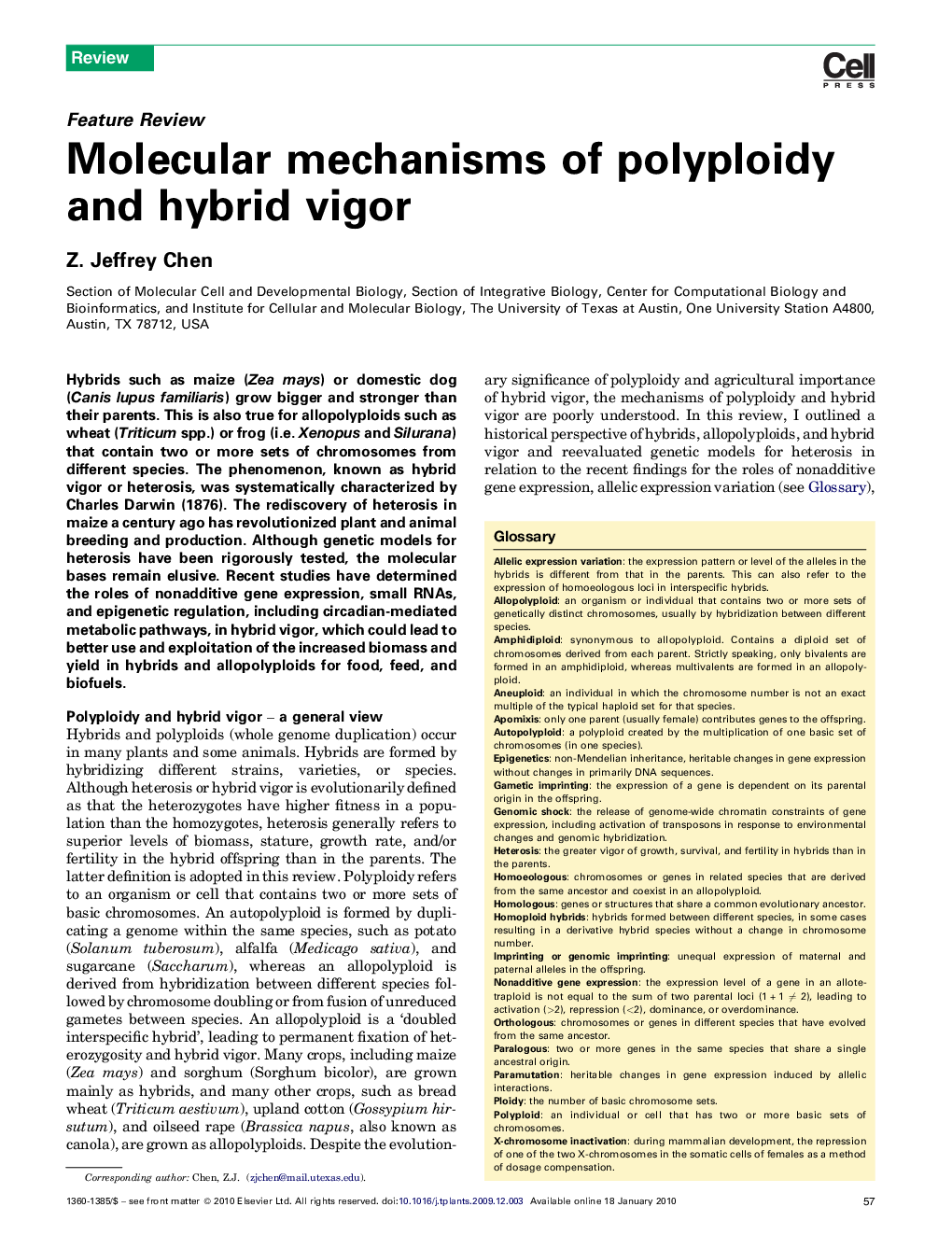| Article ID | Journal | Published Year | Pages | File Type |
|---|---|---|---|---|
| 2826276 | Trends in Plant Science | 2010 | 15 Pages |
Hybrids such as maize (Zea mays) or domestic dog (Canis lupus familiaris) grow bigger and stronger than their parents. This is also true for allopolyploids such as wheat (Triticum spp.) or frog (i.e. Xenopus and Silurana) that contain two or more sets of chromosomes from different species. The phenomenon, known as hybrid vigor or heterosis, was systematically characterized by Charles Darwin (1876). The rediscovery of heterosis in maize a century ago has revolutionized plant and animal breeding and production. Although genetic models for heterosis have been rigorously tested, the molecular bases remain elusive. Recent studies have determined the roles of nonadditive gene expression, small RNAs, and epigenetic regulation, including circadian-mediated metabolic pathways, in hybrid vigor, which could lead to better use and exploitation of the increased biomass and yield in hybrids and allopolyploids for food, feed, and biofuels.
